KNOWLEDGESTREAM AT-A-GLANCE
Product Market Fit for a Shifting Marketplace
ABSTRACT
Product Leaders are facing a rapidly changing marketplace and traditional means of learning are outdated. We are looking to understand how product leaders today are adjusting to their changing environments and markets.
PARTICIPANTS















OBJECTIVES
1. Assessment of Tradtional Research Learning Tools : Determine the challenges, drivers, trends and frictions with Research Learning Tools
2. Compare Research Learning Tool Alternatives : Develop a thorough list of alternatives, their strengths and weaknesses, supported by examples.
3. Hot Trends amongst Research Learning Tools : Define the key characteristics that would need to be true to make the desired impact.
4. Course of Action - Evolving Research Tools & Service Offerings : Define the recommended path(s) for a viable solution and identify the critical success factors in deployment.
End Date: Jul 27, 2022
CONTRIBUTIONS
ACTIVITY
65 Days
4 Themes
78 Contributors
411 Posts
155 Comments
70 Followers
OUTPUTS
3 Slide Deck
4 Blog Post
THEME #1
Assessment of Traditional Research Learning Tools - Opportunities for Change
THEME SUMMARY
Research Learning Tools play a critical role and will continue to evolve
- There are key drivers, obstacles, and future opportunties for Research Learning Tools usage
- Drivers and obstacles for RLT's leave room for optimization based on business objectives and emerging technology tools
- Leadership needs to embrace the use of RLT's and follow the leaders who will provide futuristic/enhanced tools to make learning easier and faster
RECOMMENDED NEXT STEPS
1. The next steps are to address RLT's challenges and unmet needs to help guide the creation of new and enhanced RLT's. 2. Various tools or enhancements may need to be created based upon business objectives to be solved by the RLT's.
Top value drivers for why companies embrace Research Learning Tools
A very specific and honed topic can bring scads of great information assuming you carefully watch and monitor the entire process. You can start at point A, with a specific idea in mind for the end result and end up with tons of new topic points that you hadn't thought of prior.
the faster you can roll out a location, a product, or an idea to market, the more likely you are to beat out the other competition. Tools can help make us faster, especially when they assist with doing the thinking for us.
resource management. Instead of hiring a human, they are deciding to outsource to a vendor or a tool. It allows for thinner teams, and maximized productivity.
Key obstacles for why companies are resisting Research Learning Tools
Even with a platform like Currnt, there is a fair amount of upfront work that must be put into the themes and sub-questions to elicit great responses. And often the best responses come from a back and forth conversation based on panel responses. It's a garden that needs constant tending
It’s important to listen to our customers, but yes, it takes time and it’s costly. RLT can def help with that.
Those companies who need data fast and that want to build proper forecasting are definitely resisting RLTs. The problem with RLT relies that these methods gives you data and insights of what has happened, but not of what will happen.
New trends and technologies are emerging to help companies provide better market research
Availability of internal and external data related to products/service/custmers brings new tech eneabled opportunities: - AI prediction/insights - new tools to extract from social networks trends - new start-ups with specific solutions for researching the market
As SaaS becomes a common model in the digital space, Design Thinking has become more popular as well as companies realize that in order to achieve product / market fit out the gate, they need to iterate in a manner that allows them to get customer feedback quickly.
As organizations and their products become more iterative and agile, I can see reliance on tools expanding... as releases become more frequent, there is a desire to "fail fast", and confirmation of feature success and return on investments is desired.
Future Opportunities Abound
Ultra transparent market competition can lead to homogenous approaches for strategies among rival companies in pursuit of a competitive edge, RLT's can offer fresh thinking, bespoke insights and key analysis, which enables savvy companies to devise novel, solutions for challenging problems.
It is the leadership role to see the long-term value of the research and find the opportunities lied behind the research. Also, with the availability of new tools, it should be easier for companies to set their research objectives
In online communities, you can post a Checklist or Survey to gain instant feedback. You can also hold live events: Digital Live Events, Email Outreach, SMS/MMS Outreach, Ringless Voicemail Drops Outreach, Voice Broadcast Outreach,Virtual worlds and Messaging Chat Groups.
THEME #2
Compare & Contrast Research Learning Tools - Alternatives and Solutions
THEME SUMMARY
Multiple Research Learning Tools are used to better understand the Voice of Constomer (VOC)
- Business teams need VOC Research Learning Tools and they provide generally neutral to somewhat favorable ratings for those available
- A variety of Research Learning Tools are needed to uncover insights, highlight opportunities and obstacles
- Capturing VOC insights warrants a variety of tools which are selected based on product life stage and business issues
- Best Practices are applied to understand and apply the optimal Research Learning Tools
RECOMMENDED NEXT STEPS
1. Leadership buy in is necessary for the process to truly be open to learning about the Voice of the Customer. 2. RLT's are selected based on desired learnings and outcomes. 3. There is opportnity to differentiate tools for various product lifestyle and different audiences. 4. With VOC tools, a "Closed Loop" process is a best practice, so the Customer feels hear and validated.
SURVEYS
Understanding the Voice of the Constomer is Important but the process has its Nuances
The first step is buy-in from leadership on the value of VOC. Next, choose a platform to (a) seek participation, (b) collect data in a straightforward way (c) report conclusions efficiently. Lastly, convey findings in an easy-to-understand format to apply to projects and disseminate results
Voice of the Customer channels should have robust feedback mechanisms. If feedback is truly valued, it must be acknowledged and customers should expect a level of response for their input.
The challenge we have is gathering voice of the customer at scale. When when doing VoC in a small startup, direct methods are feasible, however at scale obtaining the same quality of insight becomes more deliberate.
Alternative Research Learning Tools serve various purposes for uncovering insights, and to highlight opportunities and obstacles
Before starting VOC research, it is vital to understand "who" you'll be asking (the customer group) and "who" you'll be telling (your internal audience). Choose whether your audience will be more informed by quantitative vs. qualitative findings. Do not overlook the power of video,
The customer has their own 'truths' or 'perceptions.' Sales wants to 'educate' them on why they are mistaken or wrong. True VOC does not judge, educate or pitch new products. It records the answers. In order to capture it accurately, you must eliminate the sales staff from the conversation.
When trying to get a sense of scale, the drivers/barriers to uptake for a service etc I'd prioritise (quantitative) survey tools. If trying to get under the skin of something and understand the how/why then a (more qualitative) tool like UserTesting is great.
VOC Research Learning Tools are selected based on the desired outcome
We use 4 VOC platforms. Typeform to design surveys (easy for data collection). CrazyEgg gives feedback on web page interactions. UserTesting combines live user recording of website interactions and usage responses. VideoAsk uses asynchronous messaging/question/response for: video, audio & textual.
We use different VOC sources - NPS feedback, online reviews, customer exit surveys, customer testing and analytics. We need to be mindful that one source isn't unduly influencing decision-making - e.g. customer complaints needs to be considered with the context of customers that haven't complained
UserTesting is our go-to platform for early stage discovery work - customer feedback. Lucky Orange is a platform we use for heat mapping our websites. We use surveymonkey to host our NPS and any ad-hoc customer research surveys. Intercom feels like it could be a really powerful but expensive
Best Practices are applied to understand and apply the optimal Research Learning Tools
A marketeer's core role is to keep a hawk's eye on the market and its trends. This includes customers, users, prospects, and influencers. We do a 360-degree of listening of the customer and the influencer group across multiple forums.
To develop mass market oriented products, it's key to identify the key applications and engage with insightful customers to summarize common denominators (features) and create products based on them. There will be a lot of trade-offs
Never pitch a new product when you are trying to get Voice of Customer. The customers like you and will tell you that your new product is super and they may buy it in the future. This information is useless. New product demo's are their own category.
THEME #3
What Hot Trends are Occuring with Research Learning Tools - Envisioning the Future
THEME SUMMARY
Research Learning Tool - Hot Trends Abound - for Capturing Voice of the Consumer
- Leaders are looking for enhanced Research Learning Tools to keep up with market speed & demands
- There is desire for cost effective tools which are: easy to learn and use, provide quick access to data, offer data visualization, and help with analytics to uncover insights
- There is demand for quality tools which are: scalable flexible, modular which can reach a large or targeted sample and can be integrated with other systems
- Optimal VOC tools will have two way communication, to let consumers know their voice has been heard
RECOMMENDED NEXT STEPS
1. Be sure to prioritize and address the key characteristics for optimization of the RLT Leaders will consider a few key criteria before choosing a tool to address their issue. (Ability to access quality data, ease to use and learn the tool, speed and cost). Once these considerations are addressed, they more deeply consider additional characteristics such as: sample, flexibility, modular, output, integration. efficency of gaining insights, cstomer service). 2. Remember People are still important for a platfom to be successful. - Be sure to offer good customer service and close the loop with VOC tools. People want to know they have been heard and that is important for customer success.
SURVEYS
COST
Output
Speed
Miquel Iribarren wrote:
Alemira, Academy Ocean, LeanWorlds
James Beadle wrote:
1. Broad Sample/knowledge pool - often the most engaged customers are unrepresentative of an overall client base. Data driven decisions can be dangerous if the data itself is unrepresentative.
2. Clear, statistically valid, outputs. Ideally, outputs need to be understood by all potential users. However, clarity can come at the expense of hiding statistical ambiguity. Users need to have some understanding of how an output is reached, and it's level of validity.
3. Adaptable. If a tool is to be useful over the long term, it needs to be easily modifiable to adapt to changes in populations, the product itself, or a need for new outputs.
Manish Arora wrote:
As a Service Offering , ease of use , clear roadmap
Marzio Alessi wrote:
Flexibility/modularity; User experience; prediction capability
Alvaro Perez Bello wrote:
Speed, actionability and integrations
Tara Hodgkins wrote:
1. The ability to update satisfaction score criteria on demand. 2. Basic, Canned reports as part of OOTB product- but including easy interface to custom build more. 3- Tie in to call recording for sentiment prediction.
Panagiotis Goros wrote:
Relevance to the specific context of research (preferring specialised solutions over generic ones), speed of getting meaningful results, ease of use
Josh Tilley wrote:
credibility
value
challenging my beliefs
Aldrine Einsteen wrote:
There are two main aspects of market research -
1. The product is already available on looking to extend and improve
2. Create a new product to address specific gaps in the market
For both aspects, the main element is getting a sober view of the market. The main selection criteria for any RLT tool are to spot patterns (not apparent to a human analyst) and the ability to visualise and extrapolate with various degrees of deviation.
One of the organisations where I sit on the advisory board uses AI to spot how the flu impacts schooling and provides Education Enablement Tech targeting affected areas (based on climatic analysis).
Josef Z wrote:
Uniqueness, Business Relevance, Application Simplicity
Shady Ramadan wrote:
AI/ML for data analysis and insights, Easy to use, visualiztation
Farid Poonja wrote:
1) Simple configuration - manageable directly by product team
2) AI Based tools and analysis
3) Automated insight generator
Hot trends in the Research Learning Tool marketplace- Tools offer more desirable experiences from a number of different platforms
Specialization: Tools are more commoditized & subscription-based, it's easier to offer something bespoke to niche needs. Visualization: Tools are competing to synthesize information gathered in a visual way.Predictive: ML and AI, can determine 'what will' happen in the future based on current data.
No/Low Code: Offer templates and drag and drop tools built into your app, connect databases and build analytic dashboards. Automation: with real time data and support of AI/ML, automation provides customer journey's based on behavior. Real-Time analysis: Purchase data and uncover purchasing behavior
AI and Machine learning are key trends to improve RLTs. Lately there is more involvement to identify and filter (both in and out) customers/users to avoid getting biased replies. We are still at early days with AI, but it is improving the traditional RLTs.
Leveraging key characteristics and priorities for RLT solutions will help drive winning solutions
Winning Characteristics 1 Ease of Use 2 Actionable Data 3 Ability to Re-Create the Decision Making Context 4 Easily Adapted to New Demographics & Points of Feedback 5 Intelligent - Able to Identify Weaknesses/Strengths of respondents 6 Scalable Pricing - Have a structure for small start-ups
Incorporating features within voc RLTs that consumers already use makes the process both easy and more natural. e.g. ability to 'react' or provide answers in emojis, gifs, video files / voice notes are all relatively new features of digital RLTs but Have been used for years in other applications.
Future (successful) player requirements Values: reliability, trust, flexibility,ability to find the right data, UX Services: modular functionalities; customizable, AI exploitation to predict trends, ability to reach clients through the channels they use Help desk/support SLA like the Amazon one
To succeed in the RLT platform space in the future, the solution will need to offer value, services and support
The winning solution requires continuous innovation and adaption. The market will continue to change and adapt, and if your product and the team needs to continuously monitor and adapt. you will be left behind.
Recruitment of the right people and setting of the culture is a critical foundation to creating a high-performance team and business. It needs a mix of start/scale up experts, passionate innovators and some subject matter experts. Then you can shape the proposition, product and GTM strategy.
Focus on the added value...and test! It's about testing what is working best and focus on creating value. If a feature is not driving value, avoid it and focus on the valued characteristic. Keeping it easy and straightforward can help create more value, both as input and as output.
THEME #4
Approaches for Evolution of Research Tools - Course of Action
THEME SUMMARY
For Research Learning Tools, there are differentitators, barriers which all play out during the selection process
- There are a variety of differentiators that make RLT's unique or stand out versus other competitive options
- Various differentiators were identified which help RLT's to be chosen during the selection process
- Multiple stakeholders are often involved in the RLT selection process and value various attributes and indentify different potential barriers
RECOMMENDED NEXT STEPS
1. Based on panel feedback, there are areas of focus suggested for future product development and ways to address the options/features during the sell in process. The RLT's need to be simple, flexible and scalable. 2. Pay heed to the suggestions noted for the sales process. Address the needs, differentiators and barriers during the sell in process for each of the stakeholders. Be aware of the procurement & team process. Initially, provide clients with a test and learn or pilot options versus long term commitment/subscriptions. "Walk before you run."
SURVEYS
Advantages: Knowledge from panelists
barriers: Trustworthiness of sources
Matt Benka wrote:
Generally, with richer data, there's more effort required for research set up and analysis - Currnt definitely falls into this category, so common barriers with in depth studies apply here. But the effort is usually worth it - particularly in organisations where the research culture is nascent and qualitative data is undervalued, Currnt gets rid of some barriers by having them handled by Currnt.
Panagiotis Goros wrote:
Advantages: Direct insights from vetted experts, Turnkey solution
Barriers: Quality of research directly depends on the facilitator chosen, Sometimes insights can be high level
Josef Z wrote:
You may benefit from the experience of other group members regarding RLT's. However, when searching for RLT's, a web search is likely to be more efficient.
Jonathan Ralton wrote:
Advantages... it seems like a democratized tool allowing for broad participation with incentives for the right kind of participation. Disadvantages... the interaction formats can be a bit unfamiliar.
Shady Ramadan wrote:
The advantage is the community, the discussion, and the insights the platform can bring. barriers missing the interaction with the customer, some hidden insights from personal interviews
David Tigay wrote:
You don't get to hear the voice inflection - I like to hear people talk and watch their movements.
Josh Tilley wrote:
Easy to use
SImple
Can access at all times
Not sure about pricing competitiveness
Tara Hodgkins wrote:
Currnt's UI is a bit difficult to understand without dedicating time to navigation and/or meeting with one of their employees. it is organized oddly to me and I was frustrated my first week of use. After meeting with a rep and getting a personalized tour it makes more sense. I wouldn't call it a user friendly interface.
Reasons for potential differentiators were identified - including how RLT's can appear unique versus other options
Differentiators should be considered in light of goals & capabilities of the team to execute. All the features in the world won't matter if you get a tool that requires too much support & skills to turn insights into action. Offering a range of tools that can be added incrementally is an advantage.
A key differentiator is how much a provider lowers the purchasing risk and letting customers try before they buy. Providers that offer featured trial periods with additional help to set things up have an advantage vs. providers that don't offer trial periods or offer diy mode only.
The pursuit of the 'perfect' product is a dead end. Understanding that RLT will forever be a dynamic topic, perfection can't be found except for temporary periods - the process should weigh total advantages/improvements added by a technology and spend less time on what it doesn't deliver.
Various differentiators and barriers were identified which impacts why certain RLT's are chosen during the selection process
Favorite applications offer flexibility. Buying "canned" solutions that promise the world but have roadblocks and inflexibility at every turn is not good. Even if a company can't solve the problem - being able to have a path (customer success manager, tech support) to help & be heard is key.
RLT differentiators: Adaptability: Tools that can intuitively be adapted to change. Ease of Use: Efficient & impacts time spent. Multiple Engagement Tactics: A tool that gains feedback in multiple ways. Scalable Costs: Solutions need to allow cost flexibility allow new teams to access tools early
RLT inflexibility: > Yearly contracts rather than a monthly subscription. > No account sharing - products that charge per user rather than per organisation. > auto-renewals for yearly contracts
The Selection Process can be complicated and vary by organization
Different org structures have different delegations of responsibility - in some Marketing is responsible for market listening, in others its Product, or it might be Sales for Business Development. IT may need to be involved. There may be a formalized procurement process.
Often there are 3 main challenges: 1) Agreement on the technical solution. The larger the organisation, the bigger the challenge. 2) Business case. This requires a cost-benefit analysis. 3) Stakeholder management - socialising/having separate conversations in advance of the decision-making meeting
Decision process 1) Collect requirements 2) Discover 5-10 best solutions 3) Analysis of RFI & internal due diligences) to shortlist 2 4) Run pilot project (2-4 months) early on-boarding all the stakeholders to test 2 shortlisted solutions on same use 5) selection of the winning one & integrate IT
Navigating the selection process pointers & best practices
We submit a proposal & market analysis including reco from the senior end-user. A researcher will have trialled the RLT. Amount of energy expended is dependent on cost/commitment involved. RLT's costing less than $100 a month, do not require the same level of rigor as work as $30k per year.
If it is ‘replacing’ another the approval is straightforward vs. selecting an RLT that is not budgeted. If I want to try to a new RLT towards the end year when budgets are allocated, for RLTs that represent a significant cost, we demo it to our Head of Product to get a reaction before a proposal .
Org's have limits on signing power at different levels. The first question is always how much does it cost? The second question is what do we get? Proving the viability of any tool is required to justify the cost. Often RLT's are linked to a specific project or opportunity.

















































